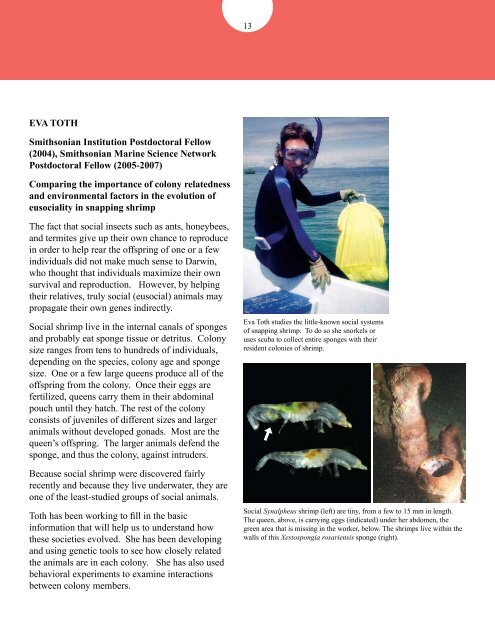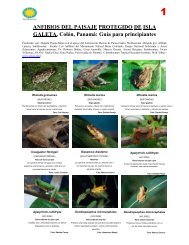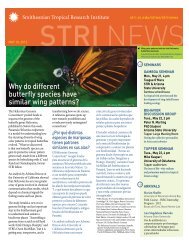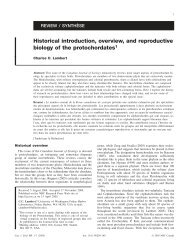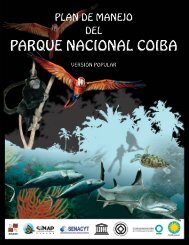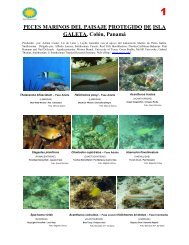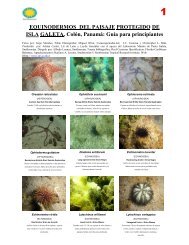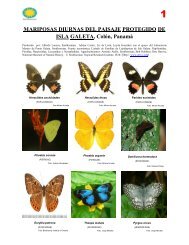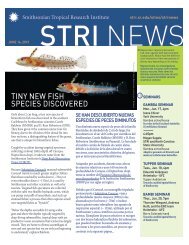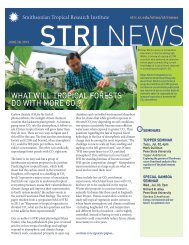Bocas del Toro Research Station - Smithsonian Tropical Research ...
Bocas del Toro Research Station - Smithsonian Tropical Research ...
Bocas del Toro Research Station - Smithsonian Tropical Research ...
You also want an ePaper? Increase the reach of your titles
YUMPU automatically turns print PDFs into web optimized ePapers that Google loves.
EVA TOTH<br />
<strong>Smithsonian</strong> Institution Postdoctoral Fellow<br />
(2004), <strong>Smithsonian</strong> Marine Science Network<br />
Postdoctoral Fellow (2005-2007)<br />
Comparing the importance of colony relatedness<br />
and environmental factors in the evolution of<br />
eusociality in snapping shrimp<br />
The fact that social insects such as ants, honeybees,<br />
and termites give up their own chance to reproduce<br />
in order to help rear the offspring of one or a few<br />
individuals did not make much sense to Darwin,<br />
who thought that individuals maximize their own<br />
survival and reproduction. However, by helping<br />
their relatives, truly social (eusocial) animals may<br />
propagate their own genes indirectly.<br />
Social shrimp live in the internal canals of sponges<br />
and probably eat sponge tissue or detritus. Colony<br />
size ranges from tens to hundreds of individuals,<br />
depending on the species, colony age and sponge<br />
size. One or a few large queens produce all of the<br />
offspring from the colony. Once their eggs are<br />
fertilized, queens carry them in their abdominal<br />
pouch until they hatch. The rest of the colony<br />
consists of juveniles of different sizes and larger<br />
animals without developed gonads. Most are the<br />
queen’s offspring. The larger animals defend the<br />
sponge, and thus the colony, against intruders.<br />
Because social shrimp were discovered fairly<br />
recently and because they live underwater, they are<br />
one of the least-studied groups of social animals.<br />
Toth has been working to fill in the basic<br />
information that will help us to understand how<br />
these societies evolved. She has been developing<br />
and using genetic tools to see how closely related<br />
the animals are in each colony. She has also used<br />
behavioral experiments to examine interactions<br />
between colony members.<br />
13<br />
Eva Toth studies the little-known social systems<br />
of snapping shrimp. To do so she snorkels or<br />
uses scuba to collect entire sponges with their<br />
resident colonies of shrimp.<br />
Social Synalpheus shrimp (left) are tiny, from a few to 15 mm in length.<br />
The queen, above, is carrying eggs (indicated) under her abdomen, the<br />
green area that is missing in the worker, below. The shrimps live within the<br />
walls of this Xestospongia rosariensis sponge (right).


